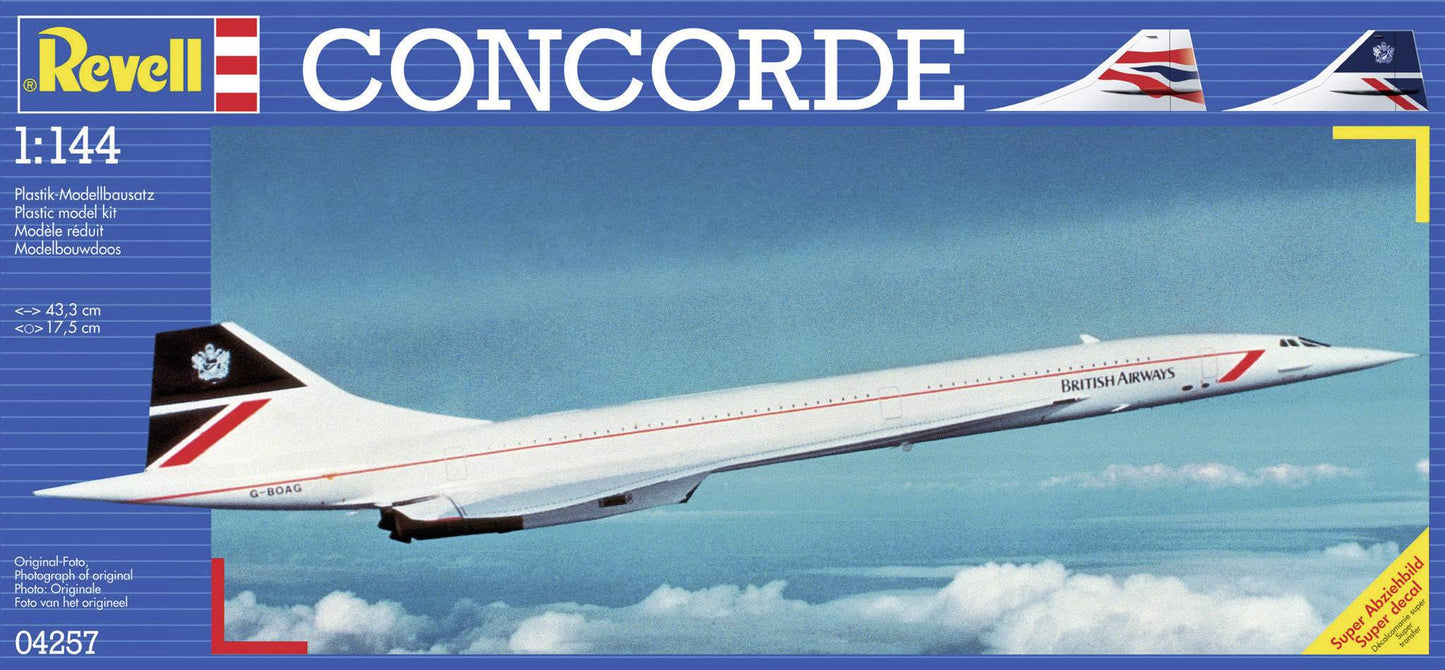Revell 04257 Concorde "British Airways" (1:144 Scale) Model Kit

Product Details
| SKU | REV-04257 |
|---|---|
| Vendor | Revell |
| Categories | Aircraft Kits Best selling products Model Kits New products Other Other Hobby Revell |
| Scale | 1:144 Scale |
| Share | |
| Features |
Product Description
Concorde British Airways model kit 1:144 - a spectacular aircraft model
The Concorde British Airways 1:144 scale model kit is an impressive aircraft model for anyone interested in aviation history. The kit consists of 67 parts and has a length of 433 mm and a wingspan of 175 mm. It is recommended for model builders aged 10 and over.
The Concorde is one of the most spectacular aircraft developments of recent years and was produced in collaboration between British Aircraft Corporation and Aerospatiale. The supersonic airliner had its first flight on March 2, 1969 and began scheduled flight operations in early 1976 (transatlantic and Middle East flights). The Concorde is equipped with four Olympus 593 engines (17,000 kgf thrust each) and achieves a maximum cruising speed of Mach 2.04. The maximum range is 6,580 km and the passenger capacity is between 128-144 people.
The model kit is equipped with a nose that can be built in two positions, two engine nacelles and landing gear that can also be built in two positions. Two decal versions from British Airways are included, allowing the model to be customized.
Characteristics:
- Scale: 1:144
- Number of parts: 67
- Length: 433mm
- Wingspan: 175mm
- Recommended age: from 10 years
- Optionally buildable bow tip in two positions
- Two engine nacelles
- Chassis optionally in two positions
- Decals Versions: 2 British Airways versions
Scope of delivery:
- Kit including construction instructions and decal
Background information:
The Concorde was the first supersonic passenger aircraft and was produced from 1969 to 2003. It was operated by British Airways and Air France and flew mainly on routes between Europe and North America. A total of only 20 examples were built, 14 of which were in use. The Concorde was taken out of service for economic and safety reasons.
